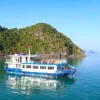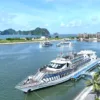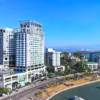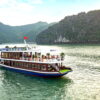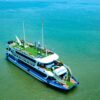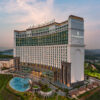Have You Ever Heard of Halong Rice-Paddy?
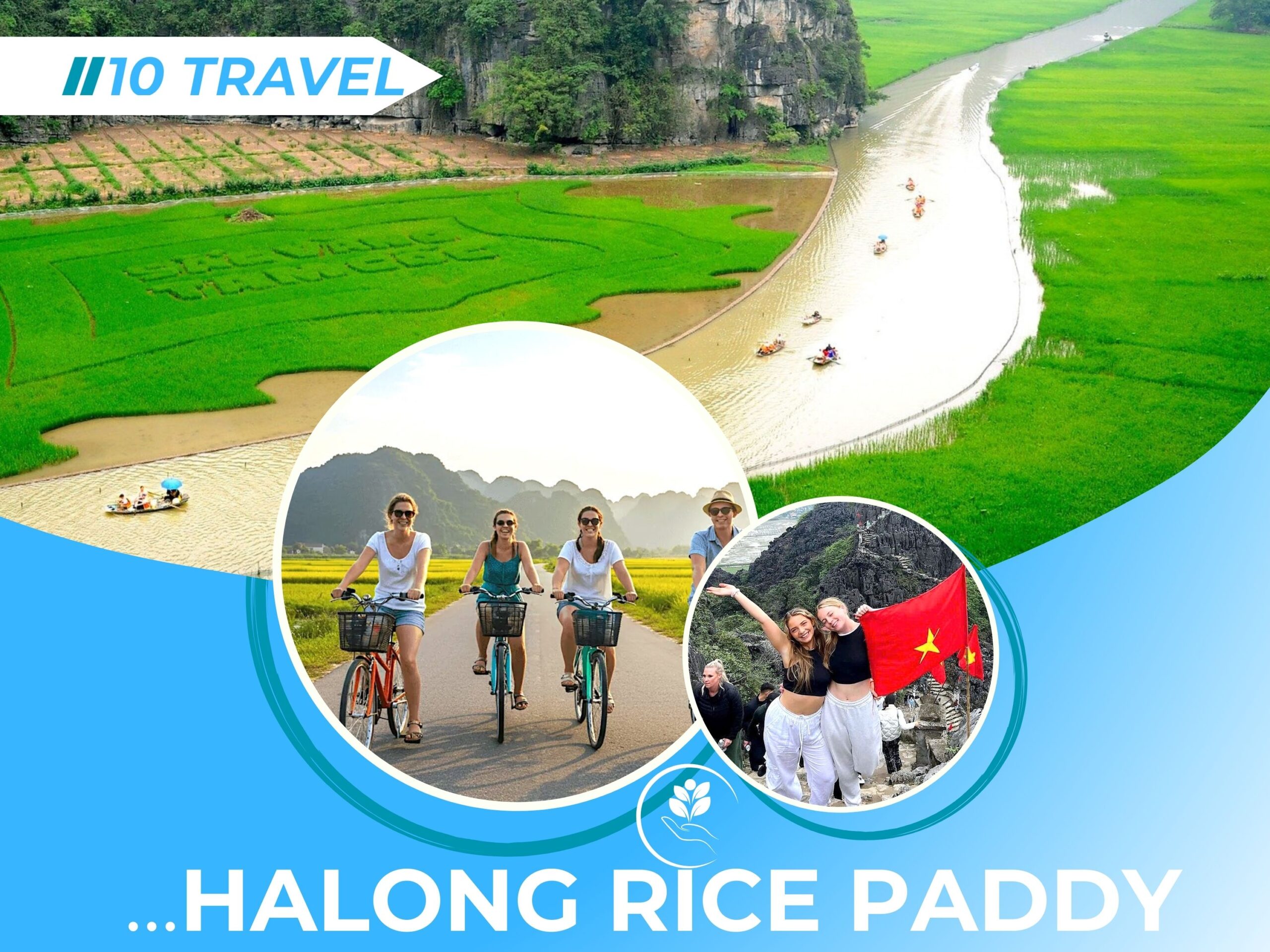
When people hear the name Halong Bay, they picture emerald waters, limestone islands and cruise boats gliding past towering cliffs. But what if I told you there’s another “Halong Bay,” one that rises not from the sea but from rice paddies?
Travelers call it Halong Bay on land, a surreal landscape where jagged limestone karsts erupt straight out of lush rice fields, creating a view that feels both familiar and otherworldly. It’s a place where you can cycle past farmers tending rice, paddle through caves on inland rivers and photograph scenes that look like floating islands in a sea of green. So, what exactly is Halong Bay on land and why should it be on your Vietnam itinerary? Let’s dive in.
Should You Go to Lan Ha and Cat Ba After Two Days at Halong Bay?
What People Mean by “Halong Bay on Land”
The term “Halong Bay on land” isn’t just a poetic nickname; it’s a way travelers describe landscapes that mirror the beauty of Halong Bay without the ocean setting.
Karsts rising from rice paddies
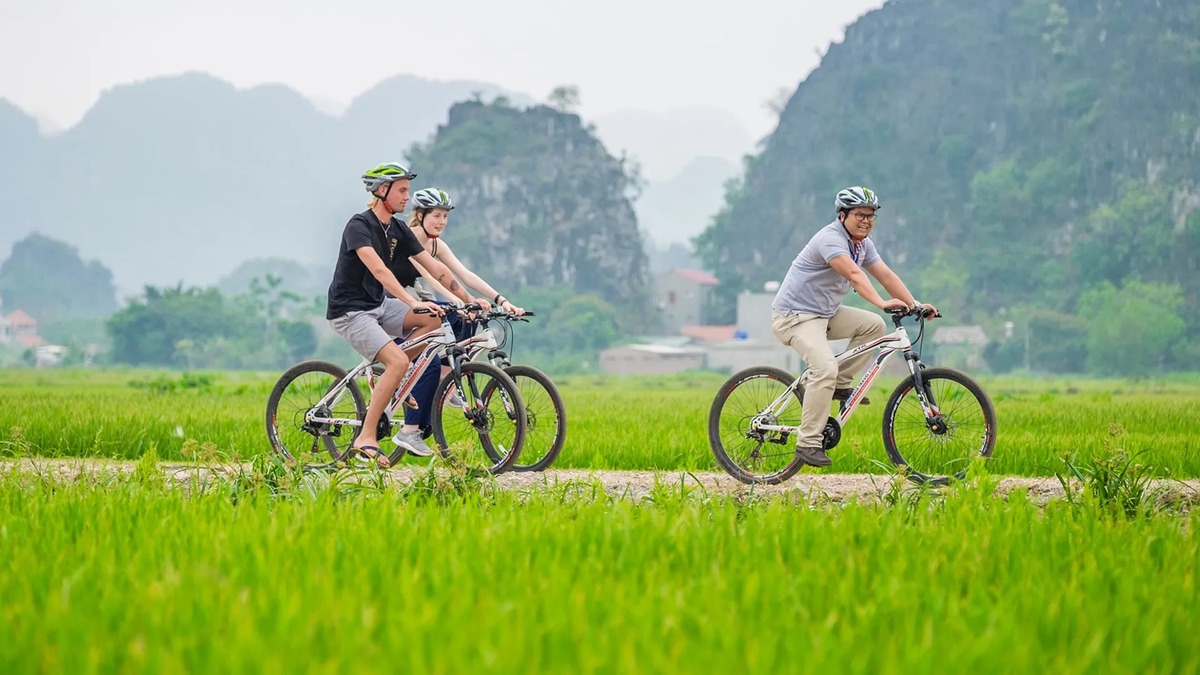
The key similarity lies in the limestone karsts — dramatic, steep rock formations formed over millions of years. Instead of emerging from the sea, these karsts pierce through flat rice fields, rivers and valleys. The result is a striking contrast: jagged cliffs above, soft green paddies below.
Different moods through the seasons
In summer, rice fields glow a vibrant green, while in harvest season they turn golden and warm. During the flood season, paddies fill with water, creating shimmering reflections of the karsts. Every season offers a new “face” of Halong Bay on land, making it endlessly photogenic.
You pay Superior double room price but you get Suite executive room.
Where to See Rice-Paddy Karsts
You may be wondering: Where can I find this version of Halong Bay? The landscapes are found across northern Vietnam, but certain regions stand out.
The most famous example
Just a few hours from Hanoi, a well-known region showcases endless rice paddies framed by limestone cliffs. This area has earned the title Halong Bay on land for good reason, It’s easily accessible, packed with scenery and rich in cultural heritage.
Lesser-known locations
Beyond the famous sites, there are valleys and villages where travelers encounter the same karst-meets-rice-field magic but without the crowds. These hidden corners are perfect for photographers and those who crave a more authentic experience.
Seasonal timing matters
-
May–June: Brilliant green fields at their most photogenic.
-
September–October: Golden harvest season, often considered the most magical.
-
November–April: Cooler weather, with mist adding a mysterious touch.
Perfect Deal: Halong Bay Day Cruise Tour with a Preferred Room at Marina Hanoi Hotel
How “Halong Bay on Land” Compares to Halong Bay by Boat
Many visitors wonder: Should I do both? Or is one enough? The truth is the two landscapes complement each other beautifully.
Experiences
-
Halong Bay by boat: Cruise past islands, kayak among sea cliffs, swim in lagoons.
-
Halong Bay on land: Cycle or walk through rice paddies, take a sampan boat on quiet rivers, explore villages.
Practical differences
-
Access: Halong Bay is about 2.5 hours from Hanoi via expressway; inland karst landscapes are often the same or slightly closer.
-
Crowds: Halong Bay cruises are popular worldwide, while land-based experiences often feel quieter.
-
Weather: Sea cruises can be canceled due to storms; land trips are less weather-sensitive.
Who should choose which?
-
Photographers: Both — sea for sunrise cliffs, land for golden rice paddies.
-
Families: Land landscapes often easier with kids or elderly (less time on boats).
-
Adventure seekers: Combine both for the fullest karst experience.
Best Ways to Experience the Rice-Paddy Karst Landscape
The beauty of Halong Bay on land isn’t just in looking, It’s in experiencing.
Cycling through paddies
Rent a bike and ride along narrow paths between fields. You’ll pass farmers in conical hats, water buffalo grazing and limestone cliffs looming overhead.
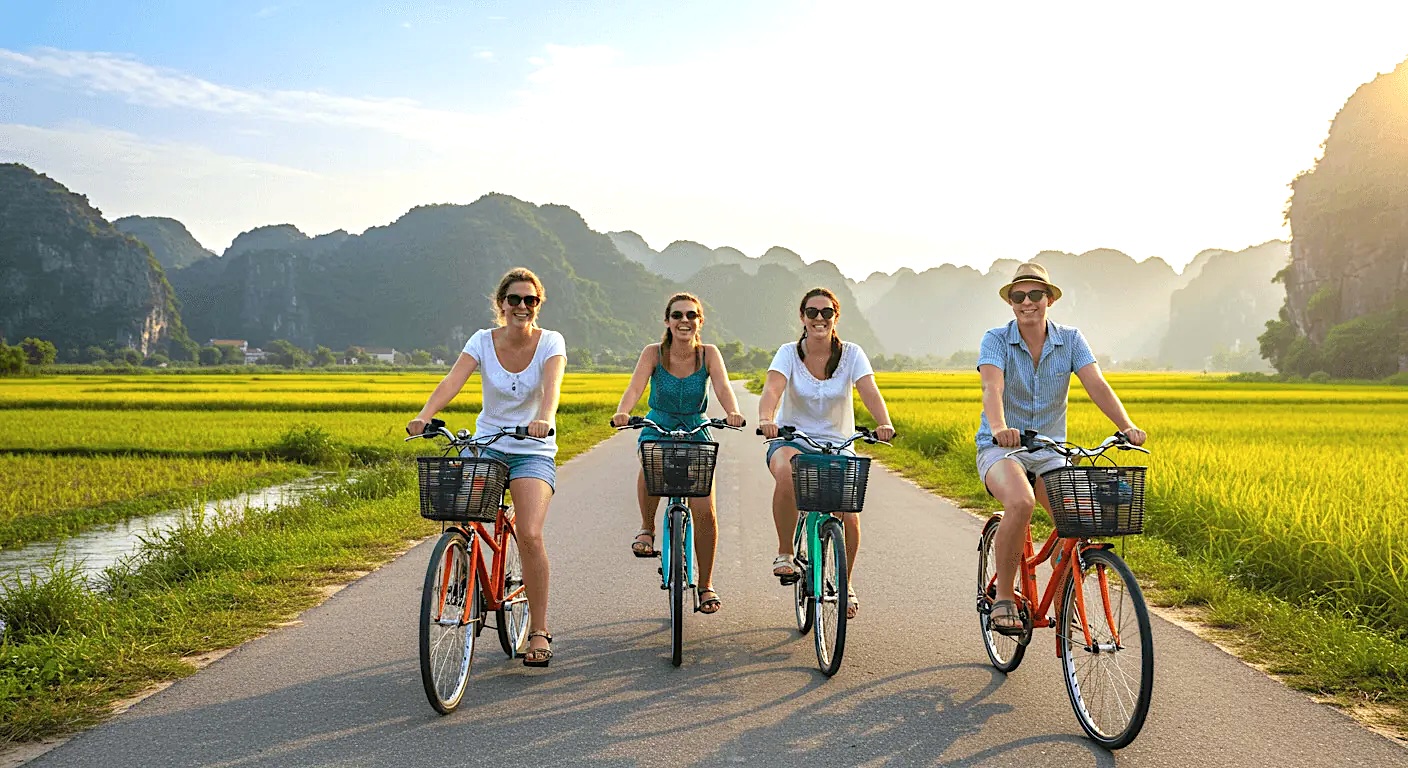
Sampan boat rides
Small wooden boats rowed by locals glide through winding rivers that cut through karsts. Unlike Halong Bay’s large cruise ships, these boats bring you close to the landscape at a slow, peaceful pace.
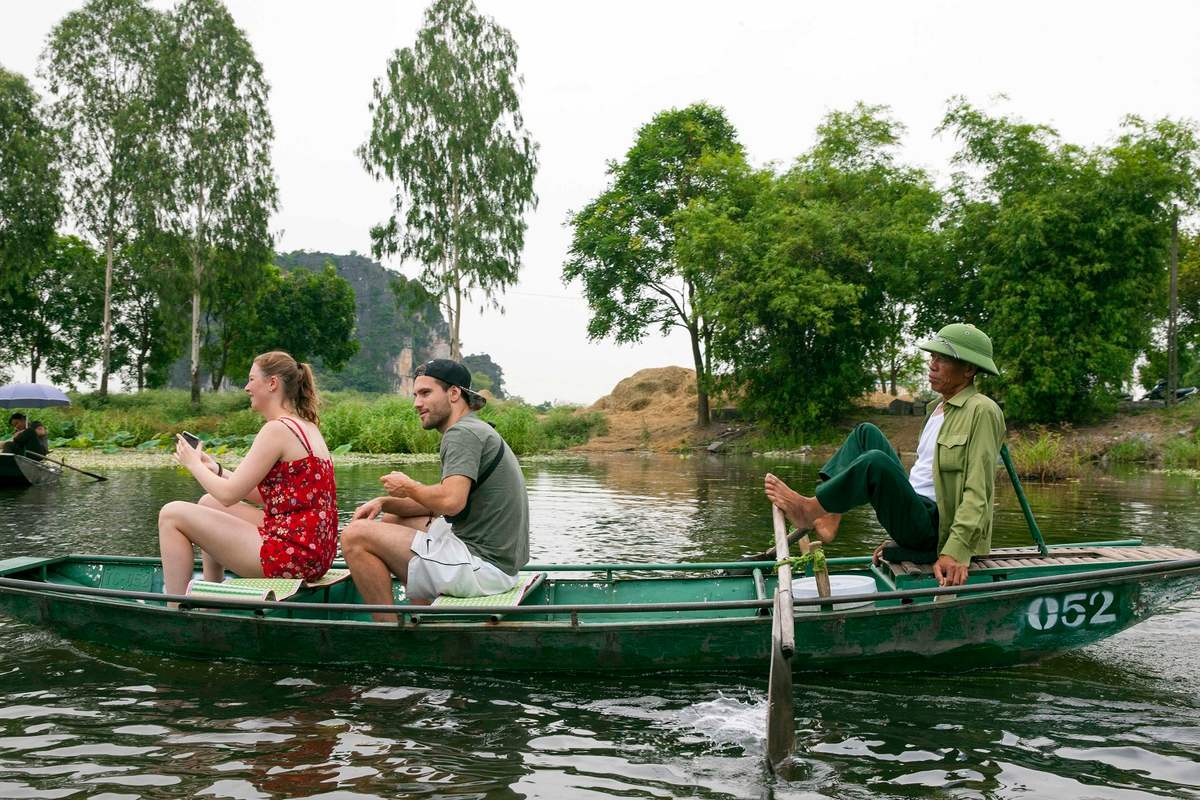
Hiking and viewpoints
Climb to viewpoints that overlook the karsts and rice paddies from above. Sunrise and sunset paint the fields with dramatic light, perfect for photography.

Homestays and culture
Stay overnight in a local homestay, share a meal with a farming family and learn how rice is planted and harvested. This gives a layer of cultural richness that sea cruises don’t always offer.
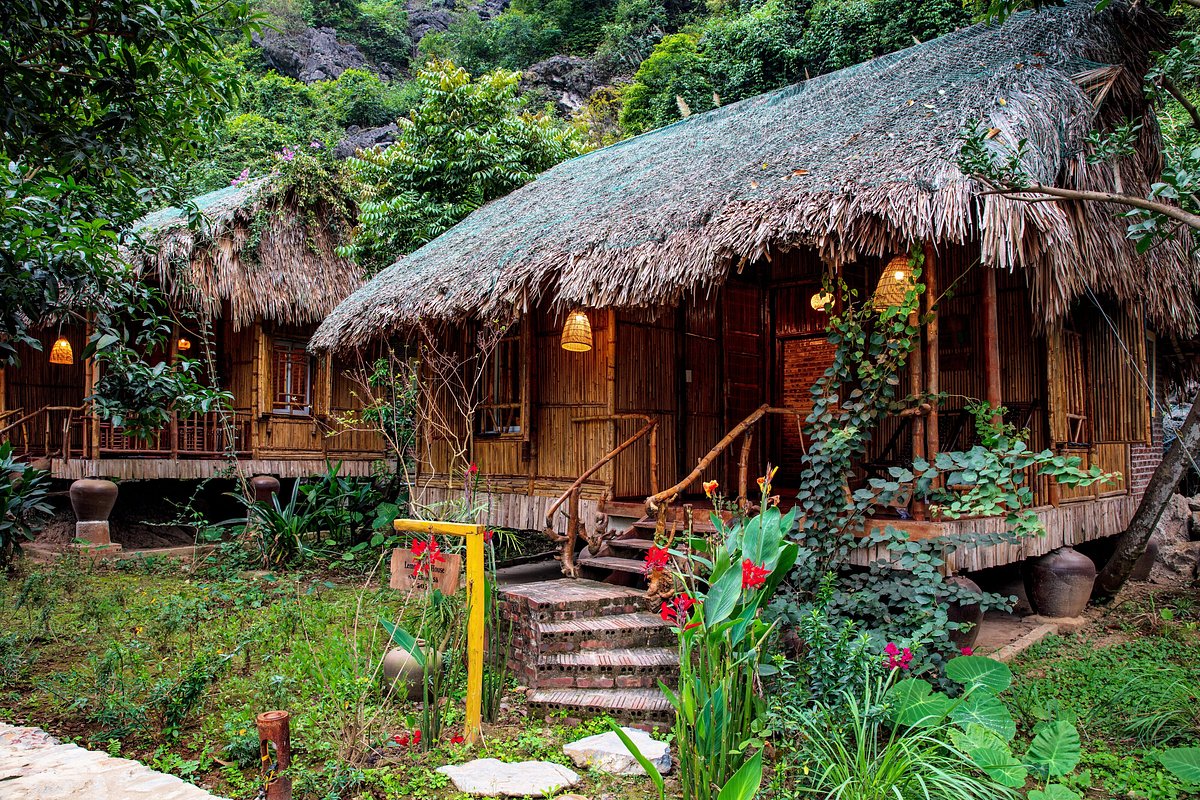
Responsible & Authentic Travel Tips
With growing popularity comes the need for mindful travel. Here’s how to enjoy Halong Bay on land respectfully.
Support local communities
Choose locally owned homestays, guides and eateries. Your visit contributes directly to the farmers and families who live in the karst valleys.
Respect farmland
Stick to paths and cycling roads. Rice paddies are people’s livelihoods and trampling them for the perfect Instagram shot can cause real harm.
Be mindful with photos
Ask before photographing people, especially farmers at work. A smile and a polite request often lead to more genuine interactions.
Sample Itineraries
To help you plan, here are suggested ways to experience Halong Bay on land.
1-Day Itinerary
-
Morning: Depart Hanoi early (7:00 am).
-
Late morning: Cycle through rice paddies and karst valleys.
-
Afternoon: Take a sampan boat ride on an inland river.
-
Late afternoon: Climb to a viewpoint for sunset photos.
-
Evening: Return to Hanoi.
2-Day Itinerary
-
Day 1: Arrive by noon, enjoy a boat ride and cycling tour. Stay overnight in a local homestay.
-
Day 2: Sunrise viewpoint hike, cultural activities (cooking, farming demo), then return to Hanoi in the evening.
FAQs About Halong Bay on Land
What does “Halong Bay on land” mean?
It’s a nickname for inland karst landscapes where limestone cliffs rise from rice paddies and rivers, resembling Halong Bay’s beauty but without the ocean.
When is the best time to visit?
Late May–June for green fields and September–October for golden harvest season. Spring (March–April) is also popular for cooler weather.
Can I combine it with Halong Bay by boat?
Yes! Many travelers combine a sea cruise in Halong Bay with a day or two in inland karst areas for a complete experience.
Is it suitable for families with kids?
Yes. Cycling, boat rides and short hikes make it family-friendly, with plenty of opportunities for cultural learning.
Two Faces of Halong, One Unforgettable Journey
Halong Bay is world-famous, but its land-based twin is equally magical. Where the sea version dazzles with emerald waters, the land version enchants with golden paddies, quiet rivers and daily life unfolding at the foot of limestone cliffs.
A Halong Bay on land trip isn’t about replacing the iconic cruise, It’s about adding depth to your Vietnam journey. Together, the two offer a yin-yang of experiences: sea and land, global icon and hidden gem. So the next time someone asks if you’ve been to Halong Bay, you can smile and reply: “Yes and I’ve seen the version that rises from rice paddies, too.”
Check available Halong Bay on land tours here!
